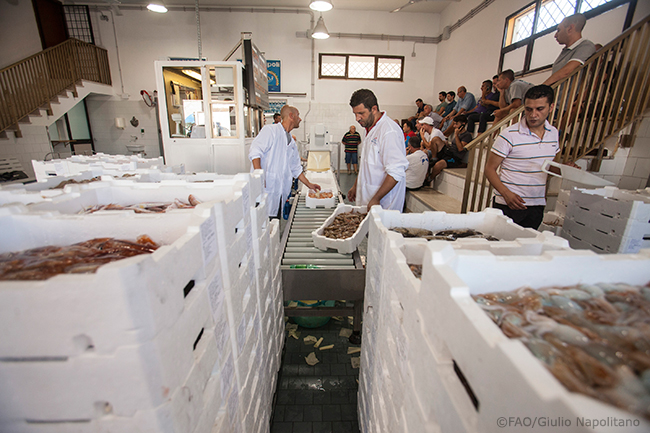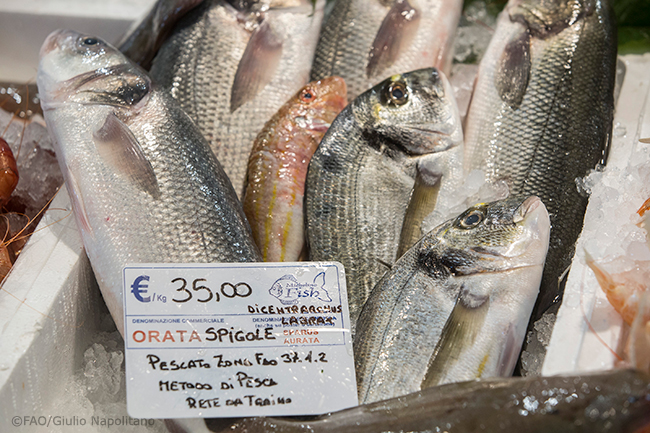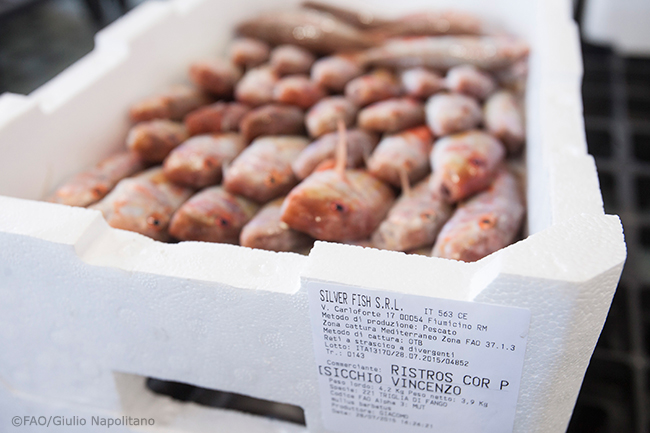
2 October 2015, Rome -- Permesso! (Pardon me!) a man yells as he pushes a large cart with stacked boxes of fresh seafood through a crowd gathered on the dock of the Fiumicino fish harbor, half an hour outside of Rome. One trawler after another dock in quick succession to unload the spoils of the day's fishing expedition - a choreographed ballet of men passing crates of shrimp, soles, sardines and squid from the boat onto shore.
They are the fruits of FAO Major Fishing Area 37.1, also known as the Western Mediterranean, which covers the Balearic Islands, the Gulf of Lions, and Sardinia.
The majority of boxes is carted straight away to the nearby auction market where they will be labeled, and restaurants and traders will bid on them.
Smaller quantities are sold right there on the dock to the local in-crowd, who time their arrival with that of the boats to get the freshest of Mediterranean catch before it goes to market.
But for most consumers, such a direct connection to the seafood they eat is rare if not impossible to have -- this makes food labeling all the more important.
 |
 |
This type of labeling system, which allows consumers to make safe and sustainable choices, has stimulated the consumption of fish products, says Ruggero Urbani, a fisheries consultant with FAO and a fish inspector with the Italian Health Agency.
"Previously, the fish was sold without any indication - and so fears around freshness and fears of one product being sold or passed off as another used to temper consumption," according to Urbani.
Improved labeling systems, in turn, help to build trust in increasingly vocal and informed consumers. And in the age of the internet, those don't let themselves be led by the nose, says Michelino.
"Customers these days inform themselves a little bit about everything, and sometimes they know more than we do - so it's very hard to fool them."
Fish sellers around the world can download the new posters in high resolution format here.
 |